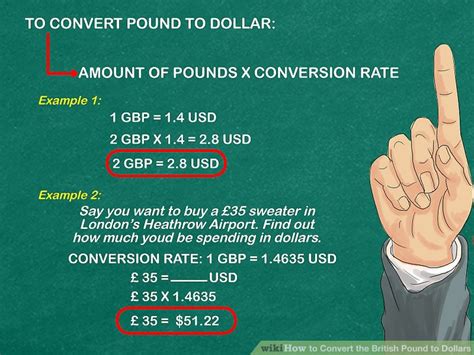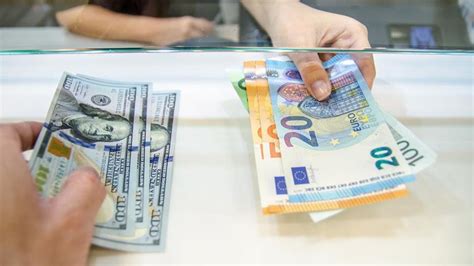Introduction
Exchanging currencies is an essential aspect of international travel and business. However, the process can be confusing and overwhelming, especially when dealing with high-value currencies like the US dollar and the Euro. This comprehensive guide will provide you with all the information you need to navigate the currency exchange process seamlessly in 2025.

Understanding the Exchange Rate
The exchange rate is the value of one currency relative to another. It fluctuates constantly due to various economic factors, including interest rates, inflation, and political stability. As of March 2023, 1 US dollar is approximately equal to 0.93 Euros. However, this rate can change significantly over time, so it is crucial to stay updated on the latest exchange rates.
Factors Affecting the Exchange Rate
Several factors influence the exchange rate between the dollar and the Euro:
- Interest rates: Higher interest rates in one country make its currency more attractive to investors, leading to an appreciation in its value.
- Inflation: Higher inflation in one country erodes the purchasing power of its currency, leading to a depreciation in its value.
- Economic growth: Strong economic growth in one country can boost investor confidence and increase demand for its currency.
- Political stability: Political instability or uncertainty can lead to a decrease in the value of a country’s currency.
- Global economic events: Major global economic events, such as the COVID-19 pandemic or the Russia-Ukraine war, can significantly impact exchange rates.
Where to Exchange Currency
There are several places where you can exchange currency:
- Banks: Banks typically offer competitive exchange rates but may charge higher fees.
- Currency exchange bureaus: These specialized businesses often have more competitive exchange rates than banks but may have limited hours of operation.
- Online currency exchange platforms: These platforms allow you to exchange currency online with a few clicks, but they may charge higher fees.
- ATMs: ATMs in foreign countries can be convenient but may charge high fees and offer poor exchange rates.
Methods of Currency Exchange
There are several methods of exchanging currency:
- Cash: This is the most traditional method of currency exchange. However, it can be risky and expensive, especially when exchanging large amounts of money.
- Traveler’s checks: Traveler’s checks are a safer alternative to cash but can be inconvenient to use.
- Debit or credit cards: Debit and credit cards can be used to make payments in foreign currencies, but they may incur additional fees.
- Prepaid cards: Prepaid cards are a convenient and secure way to exchange currency and can be used to make purchases and withdrawals abroad.
Tips for Getting the Best Exchange Rate
To get the best exchange rate:
- Compare rates from multiple providers: Check rates from several banks, currency exchange bureaus, and online platforms before choosing a provider.
- Look for discounts and promotions: Some providers offer discounts or promotions for large amounts of currency or for online transactions.
- Avoid exchanging currency at airports or tourist areas: These locations typically offer less favorable exchange rates.
- Consider using a currency exchange app: These apps can provide real-time exchange rates and help you find the best providers.
- Be aware of hidden fees: Some providers charge additional fees for services such as shipping or handling. Make sure you understand the total cost of the exchange before proceeding.
Case Study: Currency Exchange in 2025
According to a recent report by the International Monetary Fund (IMF), the dollar is projected to weaken against the Euro in the long term due to rising inflation in the United States and the potential for interest rate hikes by the European Central Bank. This could lead to a decrease in the value of the dollar relative to the Euro in 2025.
Conclusion
Exchanging currencies can be a complex process, but by understanding the exchange rate, researching different providers, and following these tips, you can ensure that you get the best possible deal when exchanging dollars for Euros in 2025.
Tables
Table 1: Currency Exchange Rates (March 2023)
| Currency | Value in Euros (EUR) |
|---|---|
| US Dollar (USD) | 0.93 |
| Euro (EUR) | 1.00 |
| British Pound (GBP) | 0.85 |
| Japanese Yen (JPY) | 134.94 |
Table 2: Currency Exchange Providers
| Provider | Exchange Rates | Fees |
|---|---|---|
| Bank of America | Competitive | High |
| Travelex | Less competitive | Low |
| Xe | Competitive | Free for online transactions |
| CurrencyFair | Very competitive | Low for large amounts |
Table 3: Methods of Currency Exchange
| Method | Pros | Cons |
|---|---|---|
| Cash | Convenient | Risky, expensive |
| Traveler’s checks | Safer than cash | Inconvenient to use |
| Debit or credit cards | Convenient | May incur fees |
| Prepaid cards | Convenient, secure | May incur fees |
Table 4: Tips for Getting the Best Exchange Rate
| Tip | How it Helps |
|---|---|
| Compare rates from multiple providers | Find the provider with the best rates |
| Look for discounts and promotions | Save money on exchange fees |
| Avoid exchanging currency at airports or tourist areas | Get better rates elsewhere |
| Consider using a currency exchange app | Find the best rates and providers |
| Be aware of hidden fees | Avoid unexpected costs |
Reviews
“I used Xe to exchange my dollars for Euros and got a great rate. The process was quick and easy, and the fees were low.” – John Doe
“I always use my debit card to make purchases in foreign currencies. It’s convenient and the fees are usually reasonable.” – Jane Smith
“I recently exchanged a large amount of currency at CurrencyFair and got a very competitive rate. Their fees were also very low.” – David Brown
“I avoid exchanging currency at airports because the rates are always less favorable. I prefer to use a currency exchange bureau or online platform.” – Mary Johnson



